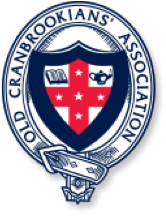Stories
Peter Hall (OC 1948), Opera House Architect
In April 1966, the architect responsible for designing our country’s most renowned building resigned. When he returned to Denmark, Jørn Utzon left behind a now iconic grouping of glimmering white eclipses, but little lay beneath the spectacular structure. Former Cranbrookian, Peter Brian Hall, was the architect responsible for completing the Opera House after Utzon’s shock resignation.
From 1966 to 1973 (which was more than half of the building’s total construction time), Peter fitted out its interiors, but found himself vilified for agreeing to take on a job that many saw as belonging to Utzon only.1 Now, just over two decades after his death in 1995, Peter’s role in making this national icon functional under a set of difficult circumstances is finally becoming recognised.2
Peter Hall (1931–1995) was a boarder at Cranbrook from 1943 to 1948.3 A high achiever, he had won a scholarship to attend our school and then won a second to undertake a double degree in Architecture and Arts at Sydney University.4 At the completion of his studies in 1957, Peter received another generous scholarship which afforded him twelve months' study in Europe.5
The young architect took this opportunity to meet Utzon, who was at that time just commencing the Opera House project.6 Little did Peter know how closely he would work with the Danish architect’s building in the near future.
In 1966, after working arrangements between the new Premier of New South Wales, Robert Askin, the new Minister for Public Works, David Hughes, and Utzon became tense, the Opera House’s creator unexpectedly left the project.7 His resignation triggered a protest of some 3000 people led by architect Harry Seidler and author Patrick White.8
It was under these “politically impossible” circumstances that Peter, who had just won the Sir John Sulman Medal for his design of the Goldstein Hall at the University of New South Wales, was approached to pick up the pieces.9 His new employer, Ted Farmer, warned the up-and-coming architect that “the project would always be mixed up with politics” and “could lead to fame … or the reverse”, and unfortunately the latter proved to be true.10
Following his appointment, Peter sat down to review Utzon’s 131 drawings of the interior. He was alarmed to find no working drawings, with his notes from the time recording that “critical items, seating and ceiling, are either not shown or not in the set”.11 There were some seating layouts for the major dual purpose hall, but these comfortably provided for only 1800 seats, well short of the ABC's expected 2800.12
Having hoped to follow Utzon’s plans, Peter instead found that a solution could only be reached through radically compromising the renowned architect’s vision, and while he managed to surmount a myriad of functional and technical hurdles, this compromise set the seal on his exclusion from the architectural community.13
Peter made a great professional sacrifice to bring the Opera House back from the brink of political and architectural crisis, but this sadly took a personal toll and he died in 1995, destitute and an alcoholic.14 A highly talented and committed architect, Peter held our school values of pursuit of excellence and integrity sky high. As his son noted: “We have the greatest building in modern history. My father was able to make it work”.15
- 1. Anne Watson, "Peter Hall Architect: The Phantom of the Opera House", ArchitectureAU, 5 April 2013.
- 2. Richard Glover, "The Sydney Opera House That Peter Hall Built", The Sydney Morning Herald, 6 February 2016; Ben Cheshire, "The Man Who Fixed the 'Plain Illegal' Sydney Opera House", ABC, http://www.abc.net.au/news/2016-01-31/peter-hall-architect-who-fixed-ope... Emma Reynolds, "Man Who 'Buggered up the Opera House' Really Saved It from Disaster", News Corp, http://www.news.com.au/national/nsw-act/man-who-buggered-up-the-opera-ho....
- 3. "Valete", The Cranbrookian 29 (1949).
- 4. "Peter Brian Hall: At Cranbrook 1943-48," Old Cranbrookian 31, No. 1 (1996).
- 5. "Chapter 20: Stage 3 Hall, Todd, Littlemore and Farmer", ABC, http://theoperahouseproject.com/ie/transcripts/Stage-3-Hall-Todd-Littlem....
- 6. Anne Watson, "The Poisoned Chalice," Meanjin Quarterly Summer (2015).
- 7. Sylvia Lawson, "The Man Who Wasn't There", Inside Story (2013).
- 8. Watson, "The Poisoned Chalice"; Joyce Morgan, "How Martin Sharp Brokered Sydney Opera House Reconciliation", The Sydney Morning Herald, 21 January 2017.
- 9. "Chapter 20: Stage 3 Hall, Todd, Littlemore and Farmer".
- 10. Watson, "The Poisoned Chalice".
- 11. "Chapter 20: Stage 3 Hall, Todd, Littlemore and Farmer".
- 12. Ibid.; "A Tilted Tale: How the Sydney Opera House Got Its Seats", Exterior Worlds Hidden Stories, Summer, No. 13 (2010).
- 13. "The Poisoned Chalice", op. cit.
- 14. Glover, op. cit.; Reynolds, op. cit.
- 15. Ibid.

